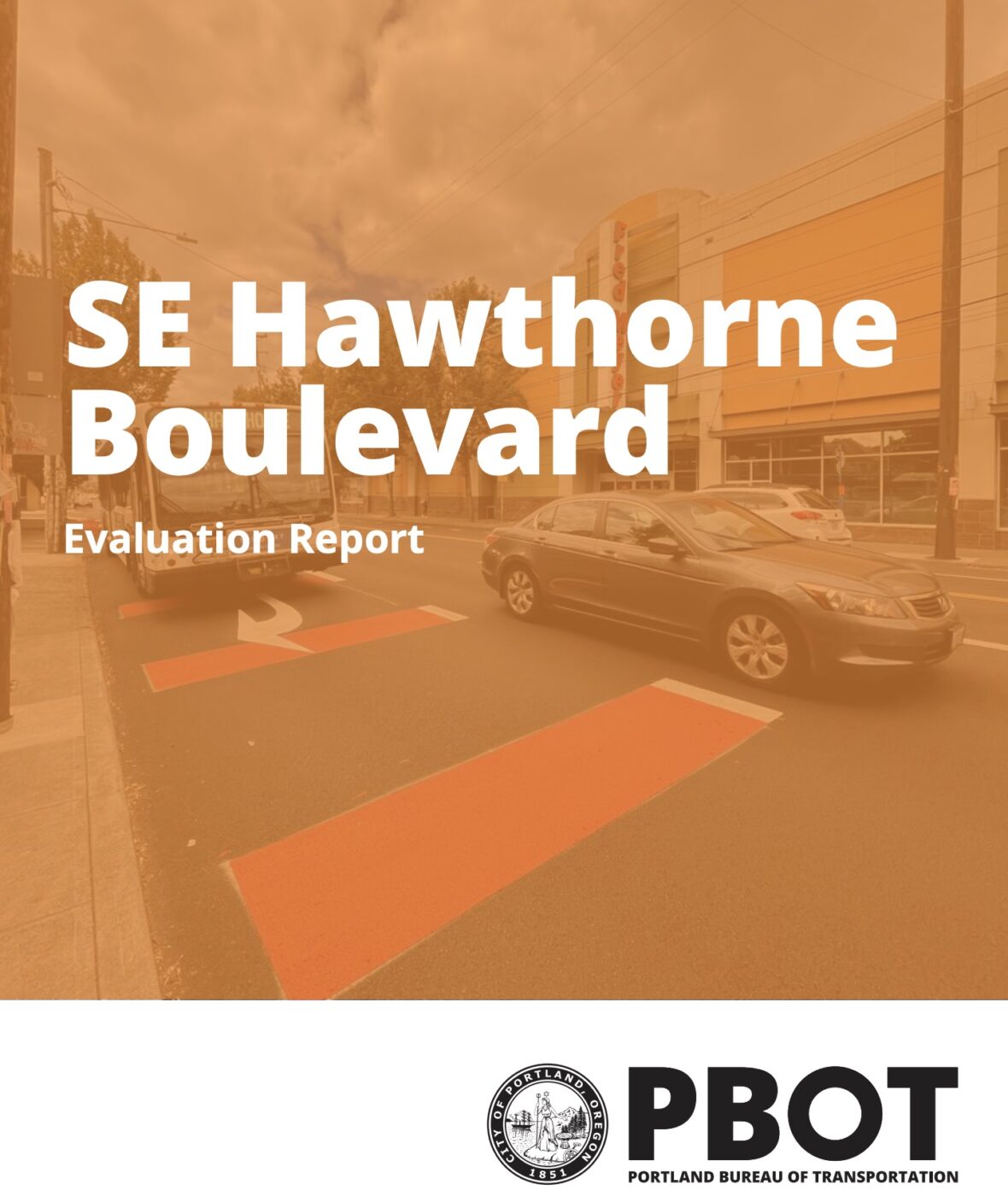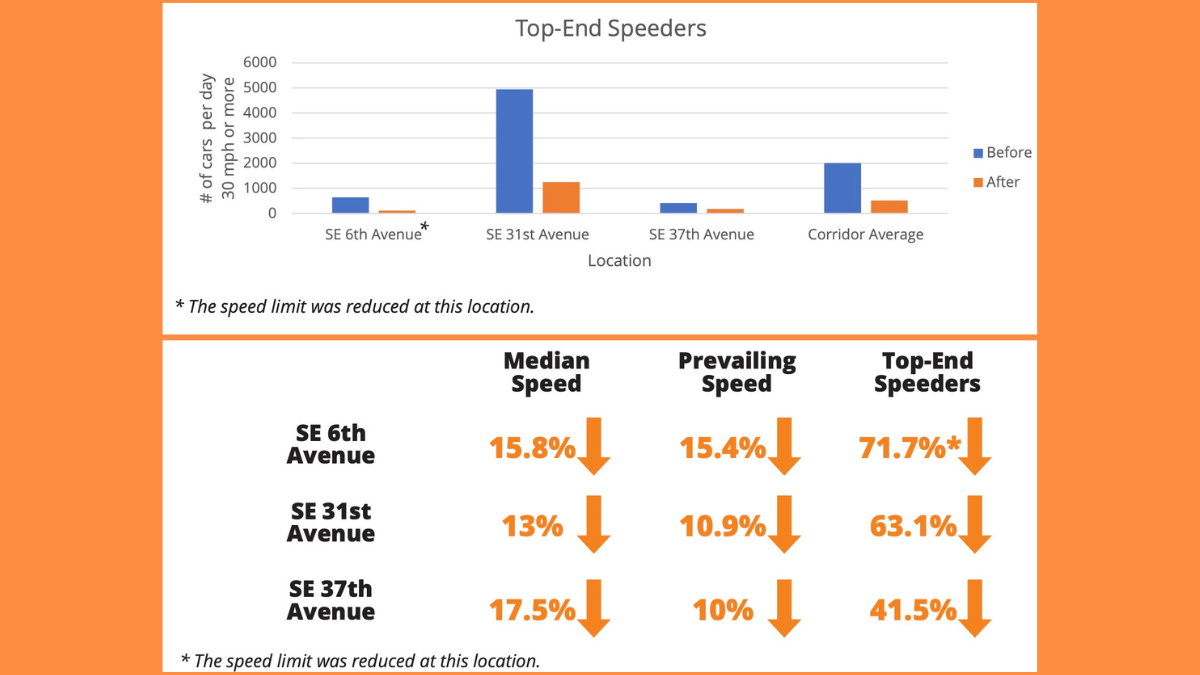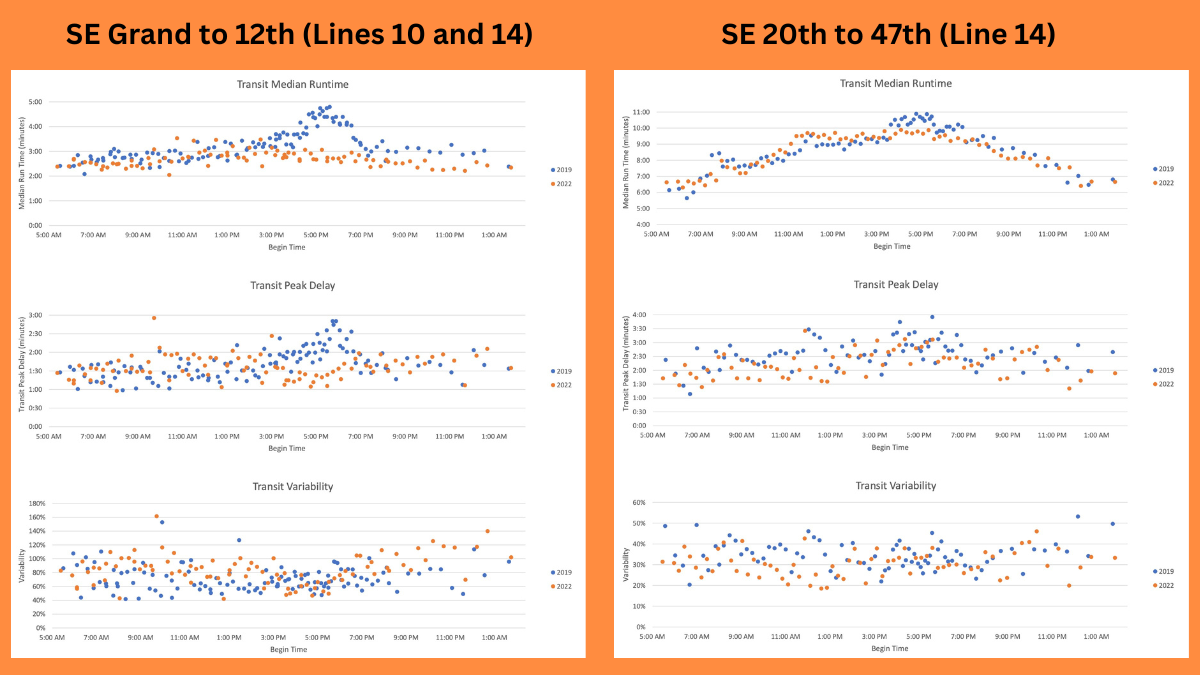

In a new analysis of traffic data by the Portland Bureau of Transportation, they say recent changes to Southeast Hawthorne Blvd that included a bus priority lane, protected bike lanes, enhanced crossings, and other lane striping changes — have met the city’s goals for biking, walking, and transit users. And the benefits have come with very minor impacts on driving times through the corridor.
PBOT’s SE Hawthorne Boulevard Evaluation Report took a closer look at two projects that were completed in 2021. The first one added a bus lane and protected bike lanes to Hawthorne from the Hawthorne Bridge viaduct to SE 13th. The second was the infamous “Pave and Paint” project that reconfigured the lanes, added median-protected crossings, and improved ADA ramps from SE 24th to 50th (this is the project where many people pushed for bike lanes, but PBOT chose to not install them).
So, how are things working now that the dust has settled? I’ll cut right to the conclusion of PBOT’s 17-page evaluation report:
“The findings in this report point to a safer and more accessible SE Hawthorne Boulevard. Vehicle speeds, especially top-end speeding, have significantly decreased. Accessibility, comfort, and safety has improved for everyone, especially pedestrians, people biking, and people taking transit. Meanwhile transit travel time improved, and travel time increases for people driving were relatively small and in-line with expected travel time increases when driving speed is reduced.”
PBOT backs up these claims with data on driver speeds, crossing availability, bus trip times and reliability, and more.
Speeds
The reduction in speeding (which has a direct impact on bikers, walkers, and transit users) is perhaps the biggest success PBOT can claim as a result of these projects. They measured speeds at three locations — SE 6th, 31st and 37th — before and after the changes. Speeds are down across the board; but top-end speeders saw the greatest reduction. See chart below:
On the inner portion of Hawthorne, lower speeds are no surprise since the bureau effectively narrowed the driving space. On the outer portion however, PBOT actually increased lane widths, which led to concern from some safe streets activists.
Transit
Bus speeds stayed mostly the same throughout the day, PBOT said. But during peak periods, buses were quicker by about 45-60 seconds through the corridor. Keep in mind that with the Pave and Paint (on the more densely commercial section of Hawthorne east of 24th), PBOT said the main reason they opted against bike lanes was because of delays it would cause for bus users.
In their evaluation, PBOT says the project has led to a 10% reduction in bus delays in the Pave and Paint section and was shortened by almost a full minute in the inner section of Hawthorne (west of 12th).
Driving times
PBOT also measured the time it took to drive through the corridor before and after the changes. Despite all the changes to the road design, PBOT’s analysis found that median travel time for car and truck drivers did not change significantly between SE Grand and 20th avenues. And between SE 20th and César E Chávez Boulevard, median travel times increased 20-30 seconds, and 40-60 seconds in the directional peaks.
“This is less than half of the travel time increases PBOT expected based on pre-project modeling,” the bureau said in their report.
The city’s critique of their own work is one thing, but what do Portlanders think? We asked that question of Hawthorne users one year ago and wrote, “Though opinions differed, the general consensus was that the new Hawthorne is better than the old one – but it could be a lot better.”
And it’s important to note that this evaluation included to very different projects when it comes to bicycling infrastructure. One of them (from the bridge to 12th) led to a significant improvement in bicycling, the other did relatively little.
And when we asked BikePortland commenters to share their opinions, this comment was one that stood out to me: “I live on SE Madison just off of Hawthorne in the zone where the improvements were made and I was very active in the public participation process leading up to the changes and had advocated for bike lanes,” shared jrenfro. “I was disappointed to not have dedicated bike lanes, but for my neighbors and I this has been a huge improvement… Cars are going slower and most seem to be following the rules. I haven’t noticed any increase in traffic on side streets. I still want bike lanes at some point but this has been a massive improvement.”






